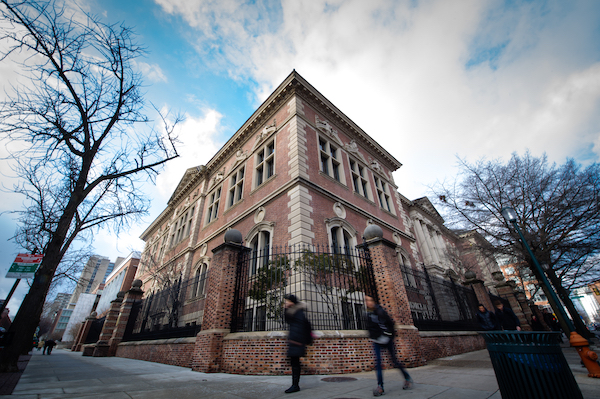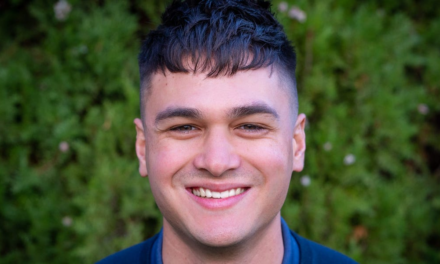Search Icon
8/13
11:00 a.m. – 12:00 p.m.
100 E. Northwestern Ave.
8/16
12:30 p.m. – 1:30 p.m.
Virtual
8/18
1:30 p.m. – 3:00 p.m.
Penn Museum, 3260 South St.
9/17
10:00 a.m. – 4:00 p.m.
Laurel Hill, 3487 Edgley Drive
Search Icon
Education, Business, & Law
In recent years, entrepreneurs across countless industries have leveraged technology in ways that expand our capabilities, networks, and opportunities. Among them is Miguel Willis, Innovator in Residence at the University of Pennsylvania Carey Law School’s Future of the Profession Initiative, who is dedicated to using the power of technology to ensure that everyone—regardless of their socioeconomic status—can access their rights under America’s justice system.
Willis first envisioned what would eventually become the Access to Justice Tech (A2J) Fellowship Program while he was studying law at Seattle University School of Law. As a student, he attended conferences on technology in the legal space, where he first saw the potential benefits of bringing together those committed to using technology to increase access to justice for communities who often face significant barriers to pursuing their legal rights. Unfortunately, he also observed that many conference speakers operated within a limited bubble.
“Schools like Stanford and Harvard had built out programs around technology, law, and various other intersections that Seattle University, where I went to law school, didn’t have,” Willis says. “So, I wanted to build that, and I wanted to build it for everyone. Penn is the home of the Fellowship, because Penn understood and supported that vision: building something for all law students.”
In its present form, the A2J Fellowship Program primarily revolves around supporting 10-week paid summer fellowships for 1L and 2L law students dedicated to engaging in meaningful work using technology to expand access to justice for various communities across the country.
Lizzie Shackney is one of this summer’s 17 A2J Fellows—and one of a few who attend Penn Carey Law. With a background that mixes data analysis and nonprofit work, Shackney specifically sought out the A2J program to widen her network within the access to justice technology space. Moreover, Shackney prioritized securing internship work that involved learning from attorneys who serve clients directly.
“I came to law school to integrate the research and analysis within legal aid organizations I had already been doing with direct client service experience,” Shackney says. “Witnessing the processes that attorneys and paralegals are using to serve their clients has been the inspiration for projects, which is in line with my theory of how these sorts of projects should come about.”
“The future of the profession requires us to be interdisciplinary. It requires us to be diverse and to really change a lot of the norms and status quo posts that the profession has held for so long,” Willis says. “The Future of the Profession Initiative aims to learn and teach leading professionals about these issues. We couldn’t see ourselves in a better place to be aligned with that vision.”
In addition to encouraging Fellows to pursue innovative, pathbreaking ways to propel the legal industry, A2J supplements its programming with a variety of means of support for the Fellows themselves.
Moreover, Willis and his team built the A2J Tech Fellowship with careful attention to and prioritization of well-being within the industry—a focus of the Future of the Profession Initiative. The program provides Fellows with resources to encourage and empower them to think critically about the role technology plays, not only in their legal work but also in their own lives.
For Willis, the incorporation of technology into the legal profession involves a nuanced understanding of the ways in which technology can be used for good, bad, and neutral purposes within the workplace and within the justice system more broadly.
Read more at Penn Law News.
Health Sciences
A team from the Center for Neuroaesthetics created a biophilic room to test the idea. Preliminary findings from a small pilot show promise, but also spur many questions about how to best use such a space.
Arts, Humanities, & Social Sciences
Artists supported by the Penn Program in Environmental Humanities created tools for navigating unpredictable ecological challenges, then brought them to life in a series of public workshops at the Independence Seaport Museum.
Campus & Community
Many in-person traditions returned to campus this year after a lengthy hiatus, including classes, but Penn’s output of research, innovation, and growth never slowed throughout the year.
Sports
The Pennsylvania Regional Training Center teaches wrestling and life lessons to 240+ high school and college students
If there’s news at Penn, you’ll find it here. We strive to bring you faculty, staff, and student profiles, research updates, and the latest happenings on campus.
The law students who help make justice accessible for all | Penn Today – Penn Today





